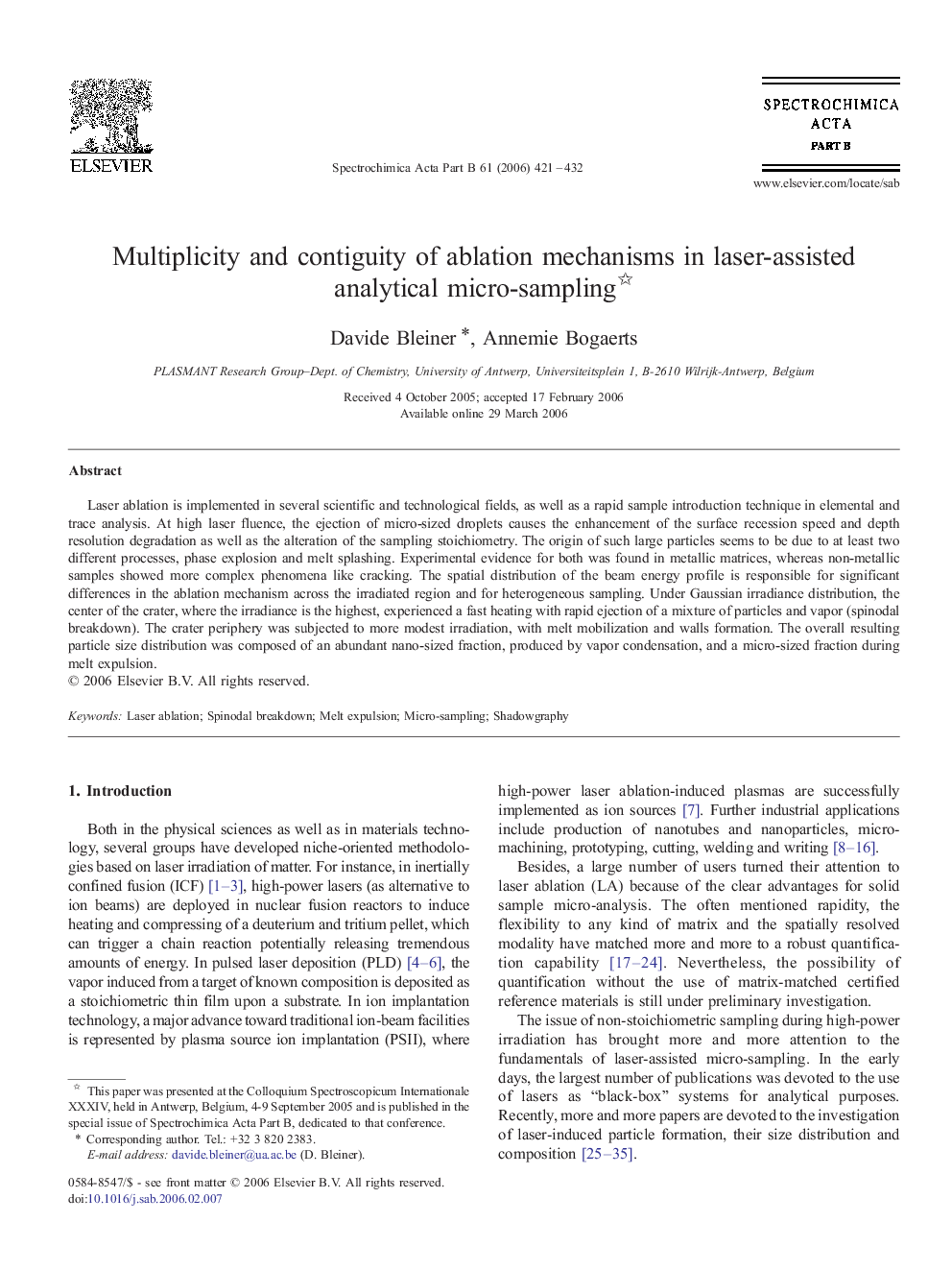| Article ID | Journal | Published Year | Pages | File Type |
|---|---|---|---|---|
| 1241476 | Spectrochimica Acta Part B: Atomic Spectroscopy | 2006 | 12 Pages |
Laser ablation is implemented in several scientific and technological fields, as well as a rapid sample introduction technique in elemental and trace analysis. At high laser fluence, the ejection of micro-sized droplets causes the enhancement of the surface recession speed and depth resolution degradation as well as the alteration of the sampling stoichiometry. The origin of such large particles seems to be due to at least two different processes, phase explosion and melt splashing. Experimental evidence for both was found in metallic matrices, whereas non-metallic samples showed more complex phenomena like cracking. The spatial distribution of the beam energy profile is responsible for significant differences in the ablation mechanism across the irradiated region and for heterogeneous sampling. Under Gaussian irradiance distribution, the center of the crater, where the irradiance is the highest, experienced a fast heating with rapid ejection of a mixture of particles and vapor (spinodal breakdown). The crater periphery was subjected to more modest irradiation, with melt mobilization and walls formation. The overall resulting particle size distribution was composed of an abundant nano-sized fraction, produced by vapor condensation, and a micro-sized fraction during melt expulsion.
